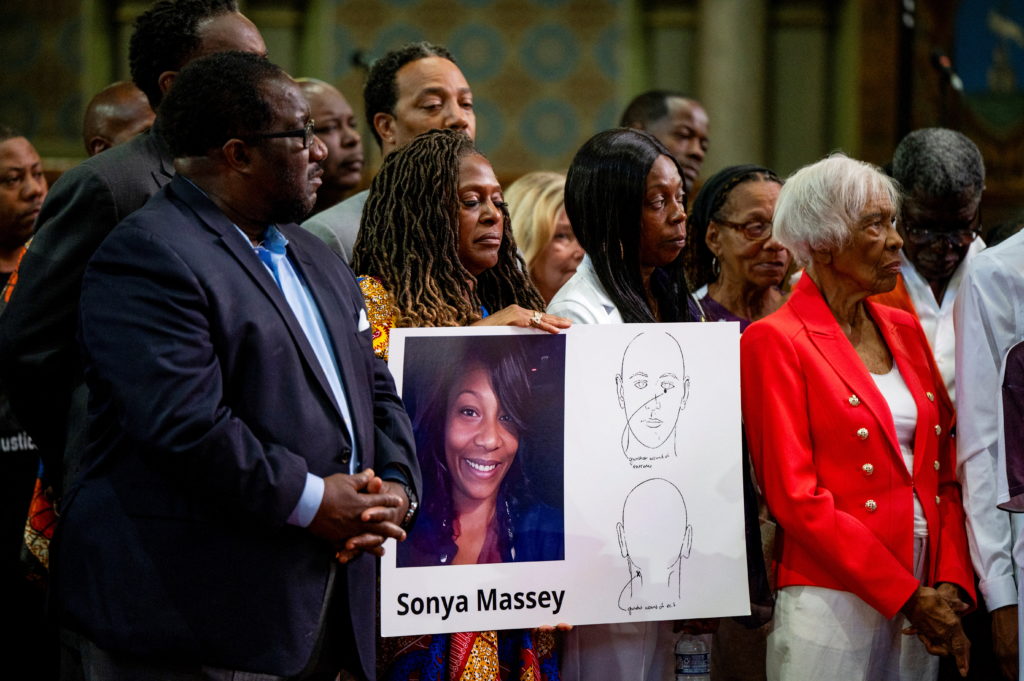News
Fast-moving French Fire in Mariposa County triggers mandatory evacuations

Authorities in Mariposa County have issued mandatory evacuation orders on a number of streets and a shelter-in-place order at a hospital after a wildfire broke out early Thursday evening.
The Mariposa County Sheriff first posted on social media about the so-called French Fire at around 6:30 p.m. Residents who live on the following roads have been order to evacuate as of 8:15 p.m.
- Hospital Rd. — From Silver Creek to the end (up the mountain)
- Grosjean Rd.
- Alta Vista Rd.
- Avoca Vale
- Old Hwy North from 140 to Wild Peach including Wild Peach both sides of the roadway
- Slaughterhouse Rd.
- Williams Rd.
- Campbell Rd.
- Pine St.
- Dexter View
Deputies are in the areas making door-to-door notifications. People at the John C. Fremont Hospital at 5189 Hospital Rd. in the town of Mariposa have been ordered to shelter-in-place because of the fire. An evacuation map showing the zones affected can be found online.
“If you live in the area and do not feel safe, please leave do not wait to be told to evacuate,” the most recent post read.
At 8:45 p.m., Cal Fire’s Madera-Mariposa-Merced unit confirmed that the French Fire was 400 acres and 0% contained. So far there is no word on what the response from Cal Fire and local fire crews has been.
Additionally, Highway 140 is closed between Smith Rd. to West Whitlock. There are multiple other road closures.
Authorities have set up a temporary evacuation point at the New Life Christian Church located at 5089 Cole Rd. in Mariposa.
Residents are advised to stay out of the fire area. Multiple Road Closures in and around the fire area.
There have been evacuation warnings issued for the following roads:
- Hospital Rd. — From Silver Creek to the End (up the mountain)
- Grosjean Rd.
- Alta Vista Rd.
- Avoca Vale
- Old Hwy North from Hwy 140 to Wild Peach including Wild Peach both sides of the roadway
- Slaughterhouse Rd.
- Williams Rd.
- Campbell Rd.
- Pine St.
- Dexter View

News
Tracking U.S. Military Killings in Boat Attacks

Since Sept. 2, the U.S. military has been attacking boats in the Caribbean Sea and eastern Pacific Ocean that the Trump administration says are smuggling drugs, killing dozens of people. A broad range of legal specialists on the use of lethal force have said that the strikes are illegal extrajudicial killings because the military is not permitted to deliberately target civilians — even suspected criminals — who do not pose an imminent threat of violence.
This is a drastic departure from past practice. The Coast Guard, with assistance from the Navy, has typically treated maritime drug smuggling in the Caribbean as a law enforcement problem, interdicting boats and arresting people for prosecution if suspicions of illicit cargo turn out to be correct.
The White House has said the killings are lawful. It cited a notice to Congress in which the administration said President Trump “determined” that the United States is in a formal armed conflict with drug cartels and that crews of drug-running boats are “combatants.” It has not supplied a legal theory to bridge the conceptual gulf between drug trafficking and an armed attack.
The New York Times is tracking the boat strikes as details become available. The strike locations and casualty figures are drawn from postings by Mr. Trump or Defense Secretary Pete Hegseth, and have not been independently confirmed by The Times.
Known U.S. strikes in the Caribbean and Eastern Pacific since Sept. 2
- Strikes
- 14
- Killed
- 61
- Survivors
- 3
Each entry is accompanied by an image taken from overhead of the boat or boats in the water shortly before the strike.
This was the sixth strike in the Pacific in eight days.
This was one of three strikes on four boats in one day in the eastern Pacific Ocean. Mr. Hegseth said that Mexican search and rescue authorities had “accepted the case and assumed responsibility for coordinating the rescue,” but he did not release further details.
This was the second strike in the same day in eastern Pacific Ocean.
This was the third strike in the same day in the eastern Pacific Ocean.
This attack, in the Caribbean Sea, was the first at night, Mr. Hegseth said.
This was the second strike in the eastern Pacific Ocean.
This was the first strike in the eastern Pacific Ocean, an expansion of the strike campaign.
Mr. Hegseth described those on the boat as affiliated with Ejército de Liberación Nacional, a Colombian guerrilla group. The strike took place in the Caribbean Sea.
This strike was on a semisubmersible in the Caribbean Sea. Two men from the boat were rescued by the U.S. military and repatriated within days to Colombia and Ecuador.
This strike took place “just off the Coast of Venezuela,” Mr. Trump said.
Colombia’s president said this boat was carrying Colombian citizens.
Officials from the Dominican Republic said they recovered cocaine from the wreckage after this strike.
Colombia’s president said the strike occurred near his country and killed an innocent fisherman.
The first strike on a boat alleged to be carrying drugs was near Trinidad in the Caribbean Sea. The boat appeared to have turned around before being struck.
News
WATCH: Massey family speaks at vigil after Illinois sheriff’s deputy convicted over killing of Sonya Massey

PEORIA, Ill. (AP) — A jury on Wednesday convicted an Illinois sheriff’s deputy of second-degree murder, a lesser charge, in the shooting death of Sonya Massey, a Black woman who called 911 to report a suspected prowler.
Watch Massey’s family and supporters speak after the verdict in the video player above.
Sean Grayson could be sentenced to up to 20 years in prison or even probation. The jury did not convict him of first-degree murder, a crime that carries a sentence of 45 years to life.
Massey’s supporters were angered by the result. Her father, James Wilburn, called it a “miscarriage of justice.”
WATCH: Activists demand reform and justice after deputy shoots and kills Sonya Massey in her home
“She called for help and she was murdered in her own home. … Second-degree murder — that is not right. That is not justice for anybody’s family,” Teresa Haley, a civil rights activist in Springfield, Illinois, told reporters outside the courthouse.
Grayson and another deputy arrived at Massey’s home in Springfield early on July 6, 2024, after she reported a prowler. He shot the 36-year-old woman after confronting her about how she was handling a pot of hot water on the stove.
Grayson and his attorneys argued that he fired his gun in fear that Massey would scald him with hot water.
Massey’s killing raised new questions about U.S. law enforcement shootings of Black people in their homes, and prompted a change in Illinois law requiring fuller transparency on the background of candidates for law enforcement jobs.
Grayson, 31, was charged with first-degree murder, but the jury was given the option of considering second-degree murder, which can apply when a defendant faces a “serious provocation” or believes their action is justified even if that belief is unreasonable. He will be sentenced on Jan. 29.
State’s Attorney John Milhiser declined to comment as he left the courtroom. He was repeatedly praised by Massey’s supporters for pursuing a trial that was moved 75 miles (120.7 kilometers) north to the Peoria County courthouse because of intense publicity in Springfield.
Defense attorney Daniel Fultz declined comment after the verdict.
“While we believe Grayson’s actions deserved a first-degree conviction, today’s verdict is still a measure of justice for Sonya Massey,” the family’s attorneys, Ben Crump and Antonio Romanucci, said after the seven-day trial.
FILE PHOTO: The family of Sonya Massey, a 36-year-old Black woman shot and killed by an Illinois sheriff’s deputy during a call for help at her home, holds a press conference and rally at New Mount Pilgrim Missionary Baptist Church in Chicago, Illinois, July 30, 2024. Photo by Vincent Alban/Reuters
Body camera video recorded by another Sangamon County sheriff’s deputy at the scene, Dawson Farley, was a key part of the prosecution’s case. It showed Massey, who struggled with mental health issues, telling the officers, “Don’t hurt me,” and repeating, “Please God.”
When the deputies entered the house, Grayson saw the pot on the stove and ordered Massey to move it. Massey jumped up to retrieve the pot, and she and Grayson joked about how he said he was backing off from the “hot, steaming water.” Massey then replied, “I rebuke you in the name of Jesus.”
Both Grayson and Farley drew their pistols and yelled at Massey to put the pot down. Grayson told investigators he thought her “rebuke” meant she intended to kill him and, in the following commotion, fired three shots, striking Massey just below the eye.
Farley testified that Massey didn’t say or do anything that caused him to view her as a threat. But under cross-examination, he acknowledged that he initially reported to investigators that he feared for his safety because of the hot water. Farley did not fire his weapon and was not charged.
Grayson, who was subsequently fired, testified in his own defense. He told jurors he noticed the bottom of the pot was red and he believed Massey planned to throw the water at him. He said Massey’s words felt like a threat and that he drew his gun because officers are trained to use force to get compliance.
“She done. You can go get it, but that’s a head shot,” Grayson told Farley after the shooting. “There’s nothing you can do, man.”
Grayson relented moments later and went to get his kit while Farley found dish towels to apply pressure to the head wound. When Grayson returned, Farley told him his help wasn’t necessary, so he threw his kit on the floor and said, “I’m not even gonna waste my med stuff then.”
Massey’s death forced the early retirement of the sheriff who hired Grayson and generated a U.S. Justice Department inquiry. The federal probe was resolved with Sangamon County Sheriff’s Department’s agreement to fortify training, particularly de-escalation practices; develop a program in which mental health professionals can respond to emergency calls; and to generate data on use-of-force incidents.
Massey’s family settled a lawsuit against the county for $10 million, and state lawmakers changed Illinois law to require fuller transparency on the background of candidates for law enforcement jobs.
A free press is a cornerstone of a healthy democracy.
Support trusted journalism and civil dialogue.
News
Want to opt out of AI? State labeling laws might help

Red STOP AI protest flyer with meeting details taped to a light pole on a city street in San Francisco, California on May 20, 2025.
Smith Collection/Gado/Getty Images
hide caption
toggle caption
Smith Collection/Gado/Getty Images
Utah and California have passed laws requiring entities to disclose when they use AI. More states are considering similar legislation. Proponents say labels make it easier for people who don’t like AI to opt out of using it.
“They just want to be able to know,” says Utah Department of Commerce executive director Margaret Woolley Busse, who is implementing new state laws requiring state-regulated businesses to disclose when they use AI with their customers.
“If that person wants to know if it’s human or not, they can ask. And the chatbot has to say.”
California passed a similar law regarding chatbots back in 2019. This year it expanded disclosure rules, requiring police departments to specify when they use AI products to help write incident reports.
“I think AI in general and police AI in specific really thrives in the shadows, and is most successful when people don’t know that it’s being used,” says Matthew Guariglia, a senior policy analyst for the Electronic Frontier Foundation, which supported the new law. “I think labeling and transparency is really the first step.”
As an example, Guariglia points to San Francisco, which now requires all city departments to report publicly how and when they use AI.
Such localized regulations are the kind of thing the Trump Administration has tried to head off. White House “AI Czar” David Sacks has referred to a “state regulatory frenzy that is damaging the startup ecosystem.”
Daniel Castro, with the industry-supported think tank Information Technology & Innovation Foundation, says AI transparency can be good for markets and democracy, but it may also slow innovation.
“You can think of an electrician that wants to use AI to help communicate with his or her customers … to answer queries about when they’re available,” Castro says. If companies have to disclose the use of AI, he says, “maybe that turns off the customers and they don’t really want to use it anymore.”
For Kara Quinn, a homeschool teacher in Bremerton, Wash., slowing down the spread of AI seems appealing.
“Part of the issue, I think, is not just the thing itself; it’s how quickly our lives have changed,” she says. “There may be things that I would buy into if there were a lot more time for development and implementation.”
At the moment, she’s changing email addresses because her longtime provider recently started summarizing the contents of her messages with AI.
“Who decided that I don’t get to read what another human being wrote? Who decides that this summary is actually what I’m going to think of their email?” Quinn says. “I value my ability to think. I don’t want to outsource it.”
Quinn’s attitude to AI caught the attention of her sister-in-law, Ann-Elise Quinn, a supply chain analyst who lives in Washington, D.C. She’s been holding “salons” for friends and acquaintances who want to discuss the implications of AI, and Kara Quinn’s objections to the technology inspired the theme of a recent session.
“How do we opt out if we want to?” she asks. “Or maybe [people] don’t want to opt out, but they want to be consulted, at the very least.”
-

 New York7 days ago
New York7 days agoVideo: How Mamdani Has Evolved in the Mayoral Race
-

 World1 week ago
World1 week agoIsrael continues deadly Gaza truce breaches as US seeks to strengthen deal
-

 News1 week ago
News1 week agoVideo: Federal Agents Detain Man During New York City Raid
-

 News1 week ago
News1 week agoBooks about race and gender to be returned to school libraries on some military bases
-

 Technology1 week ago
Technology1 week agoAI girlfriend apps leak millions of private chats
-

 Politics1 week ago
Politics1 week agoTrump admin on pace to shatter deportation record by end of first year: ‘Just the beginning’
-

 News1 week ago
News1 week agoTrump news at a glance: president can send national guard to Portland, for now
-

 Business1 week ago
Business1 week agoUnionized baristas want Olympics to drop Starbucks as its ‘official coffee partner’






























